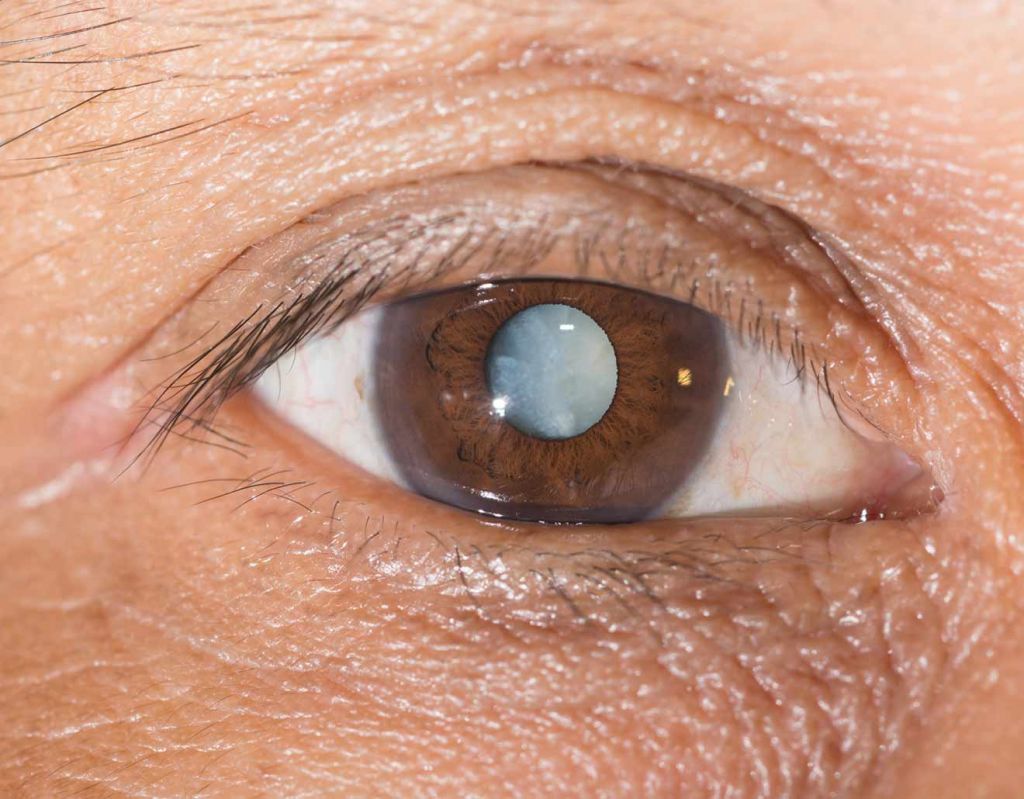A cataract is a clouding of the lens in the eye that affects vision. Cataracts are the leading cause of blindness in the world and can occur in one or both eyes. While there are several different types of cataracts, one of the most interesting is called a polychromatic cataract. In this blog post, we will discuss all polychromatic cataracts – what they are, how they form, and treatment options.
Contents
What is a Polychromatic Cataract?

A polychromatic cataract is a type of cataract in which the lens has more than one color. It can be caused by age, genetics, or environmental factors. Polychromatic cataracts are rare, and often cause problems only when they develop in people who have other types of eye diseases. Polychromatic cataracts usually occur in people over age 50, but they can also develop in younger adults.
People with polychromatic cataracts usually have a few different colors in their lenses. The colors may be scattered throughout the lens or they may be concentrated in certain areas. In some cases, the colors may change over time. Polychromatic cataracts can cause blurred vision and eye pain. They can also lead to reduced vision if not treated.
There is no known cure for polychromatic cataracts, but treatments can help lessen the effects of the condition. Some common treatments include wearing glasses that correct blurry vision, using artificial tears to lubricate and soften the lens, and having surgery to remove parts of the lens that are affected by the cataract. Some medications can be used to treat polychromatic cataracts.
Symptoms of a Polychromatic Cataract
Polychromatic cataracts are the most common type of cataract, and they occur when the lens in your eye gradually becomes cloudy. The cloudiness can range from slight to severe, and it can affect any part of the lens.
Symptoms of a polychromatic cataract include:
Blurred vision
One of the most common signs of a polychromatic cataract is blurred vision. You might experience difficulty reading or seeing objects. In more severe cases, you might have to give up your favorite hobby altogether because you can no longer participate in activities that require good sight.
Distortions in your visual field (unexplained objects may appear out of place)
Disordered vision can also lead to distortions in your visual field, which can be quite confusing. For example, you might see spots or lines in front of your eyes instead of a clear picture.
A change in color perception
As the lens cloudiness increases, you may start to see colors differently. For example, blue objects might start to look green or yellow objects might start to look brown. This is often called colorblindness and it can be quite disorienting.
Diabetic retinopathy
Polychromatic cataracts are a leading cause of diabetic retinopathy, which is a condition that affects the retina. The retina is the part of your eye that sends images to your brain, and diabetic retinopathy can damage it significantly. This can lead to blindness if not treated promptly.
A decrease in your ability to see colors accurately
When the lens cloudiness is severe, you may also start to see colors inaccurately. This can make it difficult to differentiate between different shades of colors and can lead to a loss of accuracy when driving or working in a brightly lit environment.
A feeling that you are looking through a veil or filter
Sometimes people with a polychromatic cataract experience difficulty reading or driving in bright sunlight. The reason for this is that they feel like they are looking through a veil or filter. Also, objects may look blurry and out of focus.
Reasons For Polychromatic Cataracts

There are many potential causes of polychromatic cataracts, but the most common is age-related macular degeneration (AMD). As we age, the clear lens inside our eye that helps us see in bright light gradually becomes cloudy. This can cause gradually decreased vision and eventually lead to a cataract.
Polychromatic cataracts also occur as a result of other medical conditions, such as diabetic retinopathy or glaucoma. The exact cause of polychromatic cataracts is often difficult to determine, but it’s typically due to some combination of these factors.
Some other reasons are:
Genetics
People with polychromatic cataracts often have a family history of the condition. Several genes can play a role in the development of polychromatic cataracts, but the exact cause is still unknown.
Age
Polychromatic cataracts typically develop slowly over time. They typically first show up in people age 60 or older, but they can occur at any age.
Race
Although polychromatic cataracts are more common in some races than others, the cause is still not fully understood. However, studies have shown that they are more common in African Americans and Hispanics than in Caucasians.
Medications
Some medications – like steroids – can cause polychromatic cataracts. Additionally, some medical conditions, such as diabetic retinopathy or glaucoma, can lead to the development of polychromatic cataracts.
How to Diagnose a Polychromatic Cataract?
To diagnose a polychromatic cataract, your doctor will take a detailed history and perform a comprehensive physical exam. He or she may also order imaging tests to rule out other causes of your vision problems. Depending on the results of the exams and imaging tests, your doctor may recommend specific treatment options.
Another diagnosis method can be used if there is an existing medical condition that may be causing vision problems. This is called a “diagnostic approach” and it includes a detailed review of your medical history, including any previous surgeries or conditions that may have affected your vision.
Some of these tests are:
Visual field test: This test is used to evaluate the areas of your vision that are affected by cataracts.
MRI scan: This test uses magnetic fields and radio waves to create images of your brain and body. It can be used to determine if there is a problem with the brain or eye structure.
CT scan: A computerized tomography scan (CT scan) is a type of imaging test that uses X-rays to create pictures of internal body structures. It can be used to detect tumors, cysts, and other abnormalities inside the body.
Evoked potentials: This test measures how well certain parts of your eyes react when you stimulate them with light (evoked potentials). The evoked potentials may help your doctor determine if there is a problem with the optic nerve or the retina.
Electroretinography (ERG): ERG is a test that measures how well your retina responds to light. It can be used to determine if there is a problem with the blood vessels or the optic nerve.
If your doctor is not able to determine the cause of your vision problems, he or she may refer you to an ophthalmologist for further tests. An ophthalmologist is a specialist in eye care and can perform more detailed exams and prescribe additional tests.
Treatment Options for a Polychromatic Cataract

Polychromatic cataracts are a type of cataract in which the lens darkens over time. There are several treatment options for polychromatic cataracts, depending on the severity of the condition. Some of these treatment options that may be available include:
One of the main treatment options for polychromatic cataracts is cataract surgery. This involves removing the cloudy lens and replacing it with an artificial lens. Cataract surgery may be needed if the cataract is severe, causing significant vision loss.
Laser Surgery
Laser surgery is another treatment option for polychromatic cataracts. This involves using a laser to destroy the lens and reduce or remove the darkness in the eye. Laser surgery may be more effective than cataract surgery in some cases, but it is also more expensive.
Vision Therapy
Vision therapy is another treatment option for polychromatic cataracts. This involves using special glasses or contacts to help improve vision. Vision therapy may help restore some vision loss due to polychromatic cataracts, but it may not be enough to restore full vision. This also means that vision therapy may not be a good option for people who have severe cataracts.
Prevention Tips for a Polychromatic Cataract
Prevention tips for a polychromatic cataract include:
Maintain a healthy diet and lifestyle
Diet and lifestyle can play a significant role in cataract prevention. Eat a balanced diet that includes plenty of fresh fruits and vegetables, as well as whole grains and low-fat protein. Limit your intake of processed foods and sugary drinks. And make sure to get enough exercise, which can help reduce the risk of developing other health problems.
Avoid smoking
Smoking can increase your risk of developing cataracts, due to the damage it can do to your eyes. If you smoke, try to quit as soon as possible.
Get regular eye exams
It’s important to get regular eye exams to check for signs of cataracts and other eye health problems. Your doctor may also perform a vision test that uses a special light to see inside the eye. These tests can help identify any early signs of cataracts and allow you to make appropriate lifestyle changes, if necessary.
Use caution when using sunglasses
sunglasses can block the sun’s harmful rays and help reduce your risk of developing cataracts. However, be sure to use them sparingly – only when necessary and for a brief period. excessive use of sunglasses may also lead to eyestrain and other vision problems.
Trying a different type of lens
If you’re not satisfied with the results of your current glasses or contact lenses, consider trying a different type. There are a variety of prescription lenses available that can help reduce your risk of developing cataracts. Also, consider using glasses or contact lenses that feature a coating that filters out the blue light from television and other electronic devices. This can help reduce your risk of cataracts.
Conclusion
I hope that this article on polychromatic cataracts has helped me understand what this condition is and how to treat it. A polychromatic cataract is a type of cataract that affects the coloration of the lens. This condition can be very debilitating, as it can lead to decreased vision and even blindness. If you or someone you know is experiencing visual problems, consult an eye doctor as soon as possible for diagnosis and treatment options.
Cataract surgery is a safe and painless procedure. At MantraCare we have a team of experienced eye surgeons, who will be happy to answer any questions on cataract surgery. Call us at +91-9711116605 for any inquiries.
